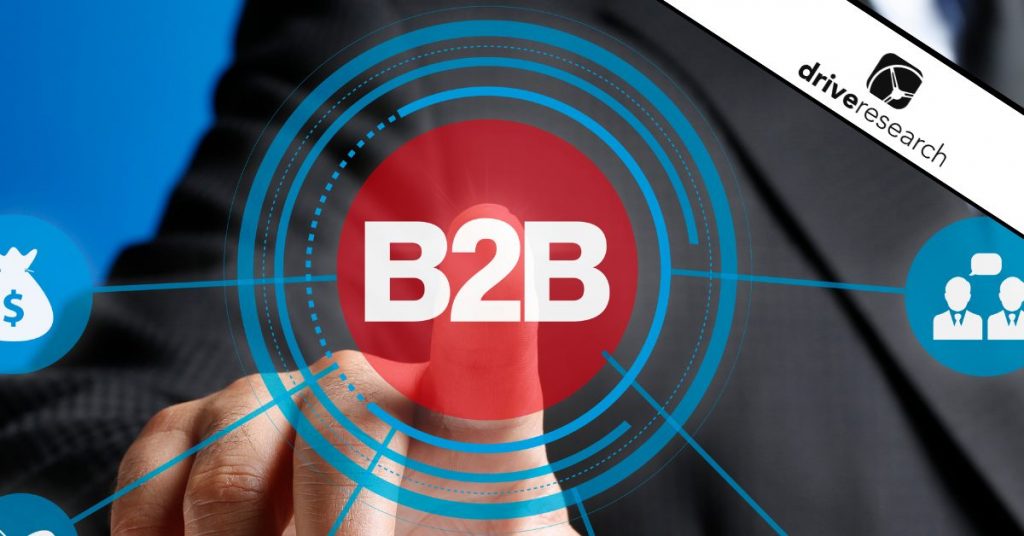
Calculating a B2B Net Promoter Score (NPS) is a straightforward way to measure the satisfaction levels of the businesses and clients you work with.
Just as customer satisfaction is crucial in B2C relationships, it is equally vital in B2B interactions.
To help measure overall satisfaction, NPS surveys provide essential data to enhance outreach strategies and measure the loyalty of your business clients, helping secure future business. In this blog post, our net promoter score company dives deeper into what NPS is and how to measure it for B2B audiences.
What is NPS For B2B?
NPS for B2B measures the satisfaction levels of businesses with their suppliers.
Here, the business in question acts as the customer, and feedback is collected from stakeholders within client organizations to gauge their likelihood of recommending the services of the main vendor.
NPS is determined through a Likert scale question, ranging from 0 to 10. Respondents who are likely to recommend the vendor score high, while those who are unlikely score low.
Responses are categorized into three groups:
- Promoters: Enthusiastic supporters of the vendor.
- Passives: Satisfied but not enthusiastic.
- Detractors: Unlikely to recommend the vendor.
This feedback helps brands refine their B2B strategies, improving client retention and satisfaction.
Why NPS Matters More in B2B
NPS is particularly important in B2B relationships due to their typically long-term nature.
High NPS scores can indicate strong loyalty, helping businesses refine their strategies to ensure customer retention and attraction. Additionally, understanding customer experiences through NPS can position a supplier competitively.
Retaining existing clients is more cost-effective than attracting new ones. NPS surveys provide actionable insights to help businesses improve their offerings and maintain long-term client relationships.
Building Relationships
Our B2B market research company finds that NPS surveys strengthen client-supplier relationships by demonstrating a commitment to customer satisfaction. They open up communication channels, allowing clients to provide specific feedback on their experiences. This proactive approach builds trust and fosters long-term loyalty.
Smaller Feedback Loop
NPS is a focused research method, centering on one key question: the likelihood to recommend. This simplicity makes it easy to gather and act on specific, targeted feedback. Follow-up open-ended questions can provide deeper insights into respondents’ reasons, making the data even more valuable.
Higher Response Rates
B2B relationships are often stronger than B2C ones, leading to higher survey response rates. Clients are more likely to participate in surveys if they feel valued and believe their feedback will improve their experience. Timing the survey appropriately, such as after project completion or during contract renewals, can also enhance response rates.
B2B NPS Challenges
Navigating B2B NPS research presents unique challenges:
- Varied Stakeholder Needs: Different priorities among stakeholders make data collection complex.
- Long Sales Cycles: Delayed feedback complicates tracing scores to specific interactions.
- Continuous Monitoring: Ongoing evaluation is necessary to track evolving client needs.
- Survey Participation: Encouraging stakeholders to participate can be difficult due to conflicts of interest and confidentiality concerns.
Despite these challenges, conducting NPS research with a prepared approach and B2B survey company can be highly beneficial.
How Do NPS Scores Change For B2B Audiences?
NPS scores in B2B relationships can fluctuate due to various factors. Understanding these changes is crucial for maintaining smooth client interactions.
Common reasons for score changes include:
- Product Changes: Innovations or enhancements can affect client satisfaction.
- Customer Support Shifts: Changes in support services can directly impact client interactions.
- Evolving Client Needs: B2B clients often seek customized solutions, and their needs may change over time.
- Diverse Stakeholders: Different stakeholders within a client business have varying needs and priorities.
To manage these shifts, maintain open communication with clients and stay adaptable to their changing requirements.
How NPS Can Predict Customer Revenue, Churn & More
NPS can predict key business metrics such as customer revenue and churn.
High NPS scores indicate satisfied clients who are likely to make repeat purchases and provide word-of-mouth referrals, boosting revenue. Conversely, low NPS scores can signal potential revenue loss and higher churn rates.
By analyzing NPS survey results, businesses can identify areas for improvement, strategize to convert detractors and passives into promoters, and ultimately enhance customer loyalty and revenue.
In conclusion, NPS is a valuable tool for understanding and improving B2B relationships. It provides actionable insights that help businesses stay competitive, retain clients, and build stronger, more satisfying relationships.
Contact Our B2B NPS Research Company
Drive Research is a market research company. Our team has years of experience in creating effective NPS surveys designed specifically for those in the B2B space. Using this data, your business will be able to effectively build and maintain key client relationships.
To learn more about our market research services, get in touch with us below.



